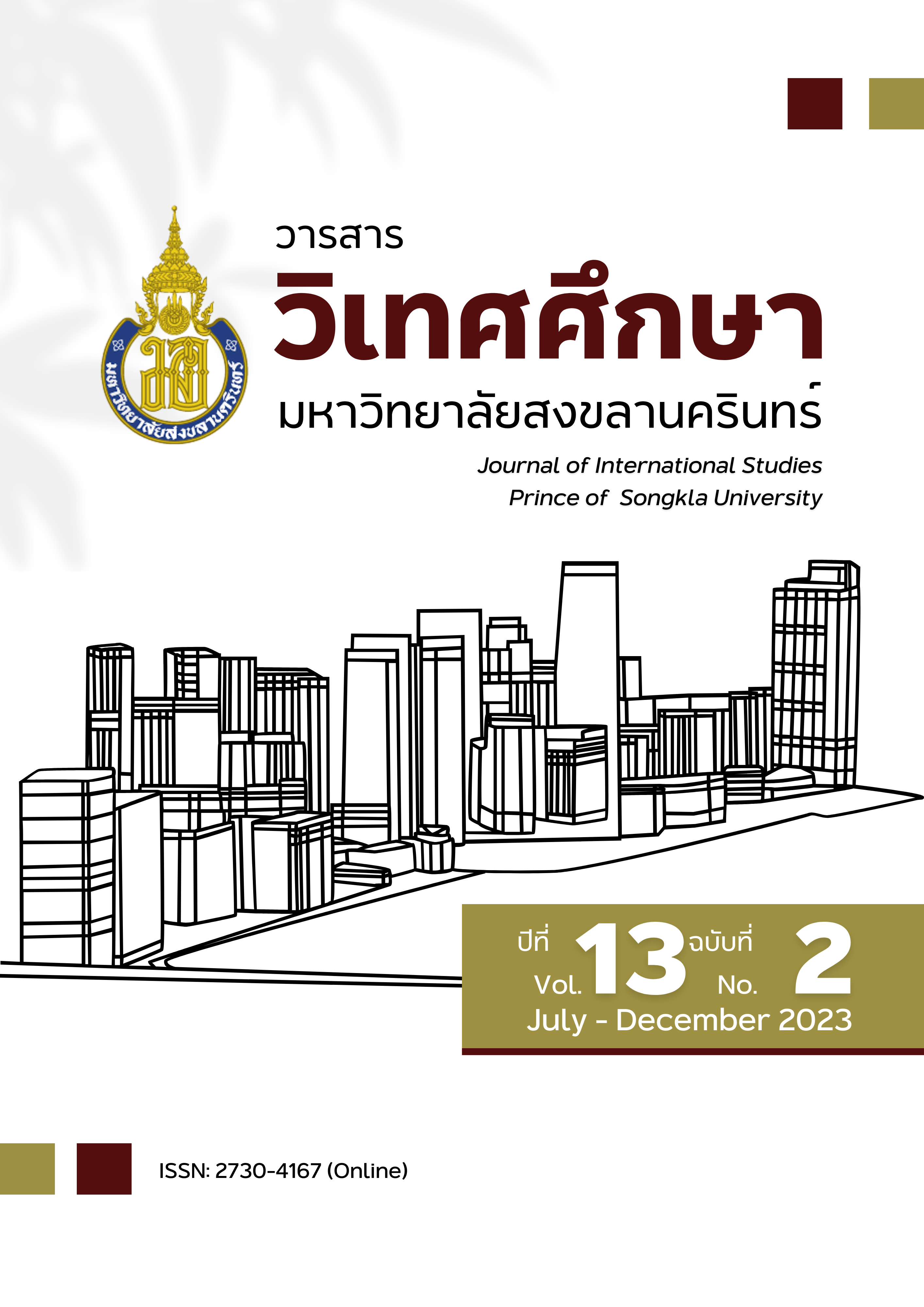Restaurant selection factors, COVID-19 risk perceptions, and customer’s self-protection
Main Article Content
Abstract
This research offers insights into the relationships between restaurant customer’s pandemic risk perception and restaurant selection factors, willingness to apply self-protection and self-protection practices amid the COVID-19 pandemic using modified protection motivation theory as the research framework. Based on 456 residents of Phuket as the subjects of the study, the results confirm the influence of three key factors of restaurant selection and risk perception factors including cleanliness and hygiene, knowledge about COVID-19 and perceived severity of COVID-19 on self-protection intention. Academic and practical implications of the study are discussed.
Article Details

This work is licensed under a Creative Commons Attribution-NonCommercial-NoDerivatives 4.0 International License.
Statements and opinions expressed in articles herein are those of the authors and do not necessarily reflect the position of the editors or publisher.
Article, information, text, image, etc. which are published in Journal of International Studies, belong to Journal of International Studies. If anybody or any organization would like to use part or whole of them, they must receive written permission from Journal of International Studies before usage.
References
Choi, J., Nelson, D., & Almanza, B. (2019). Food safety risk for restaurant management: use of restaurant health inspection report to predict consumers’ behavioral intention. Journal of Risk Research, 22(11), 1443–1457. https://doi.org/10.1080/13669877.2018.1501590
Jeong, M., Kim, K., Ma, F., & DiPietro, R. (2022). Key factors driving customers’ restaurant dining behavior during the COVID-19 pandemic. International Journal of Contemporary Hospitality Management, 34(2), 836-858. https://www.emerald.com/insight/content/doi/10.1108/IJCHM-07-2021-0831/full/html?skipTracking=true
Kim, K., Bonn, M.A., & Cho, M. (2021). Clean safety message framing as survival strategies for small independent restaurants during the COVID-19 pandemic. Journal of Hospitality Tourism Management, 46, 423–431. https://doi.org/10.1016/j.jhtm.2021.01.016
Kivela, J.J. (1997). Restaurant marketing: selection and segmentation in Hong Kong. International Journal of Contemporary Hospitality Management, 9(3), 116-123. https://www.emerald.com/insight/content/doi/10.1108/09596119710164650/full/html
Liu, P., & Tse, E. C. Y. (2018). Exploring factors on customers’ restaurant choice: an analysis of restaurant attributes. British Food Journal, 120(10), 2289-2303. https://www.emerald.com/insight/content/doi/10.1108/BFJ-10-2017-0561/full/html
Pallant, J. (2020). SPSS survival manual: A step by step guide to data analysis using IBM SPSS. McGraw-hill education (UK).
Rogers, R.W. (1975). A protection motivation theory of fear appeals and attitude change. Journal of Psychology, 91 (1), 93–114. doi:10.1080/00223980.1975.9915803.
Ruan, W., Kang, S., Song, & H. (2020). Applying protection motivation theory to understand international tourists’ behavioural intentions under the threat of air pollution: a case of Beijing, China. Current Issues in Tourism, 23(16), 2027–2041. ttps://doi.org/10.1080/13683500.2020.1743242
Ryu, K., Jarumaneerat, T., Promsivapallop, P., & Kim, M. (2023). What influences restaurant dining out and diners’ self-protective intention during the COVID-19 pandemic: Applying the Protection Motivation Theory. International Journal of Hospitality Management, 109, 103400. https://doi.org/10.1016/j.ijhm.2022.103400
Wang, J., Liu-Lastres, B., Ritchie, B.W., Mills, & D.J. (2019). Travellers’ self-protections against health risks: an application of the full Protection Motivation Theory. Annals of Tourism Research, 78, 102743. https://doi.org/10.1016/j.annals.2019.102743
Xiao, H., Peng, M., Yan, H., Gao, M., Li, J., Yu, B., Li, & S., et al. (2016). An instrument based on protection motivation theory to predict Chinese adolescents’ intention to engage in protective behaviors against schistosomiasis. Global Health Research Policy, 1(1), 1–9. doi:10.1186/s41256-016-0015-6
Yasami, M. (2021). International tourists’ threat appraisal, coping appraisal, and protection intention. Journal of Quality Assurance in Hospitality and Tourism, 22(2), 163–190. https://doi.org/10.1080/1528008X.2020.1768460
Yasami, M., Rabiul, M. K., Promsivapallop, P., & Zhu, H. (2022). The COVID-19 crisis and factors driving international tourists’ preferences for contactless dining services. International Journal of Contemporary Hospitality Management, 34(11), 4029-4051.
Yasami, M., Wongwattanakit, C., & Promphitak, K.T. (2020). International tourists’ protection intentions to use food hygiene cues in the choice of destination local restaurants. Geo Journal of Tourism and Geosites, 29(2), 583-596. DOI:10.30892/gtg.29216-491
Zapata-Cuervo, N., Montes-Guerra, M. I., & Jeong, M. (2023). How do restaurants respond to the COVID-19 pandemic? Lessons from Colombian restauranteurs and their survival strategies. Journal of Foodservice Business Research, 26(2), 186-207. https://doi.org/10.1080/15378020.2021.2006037


